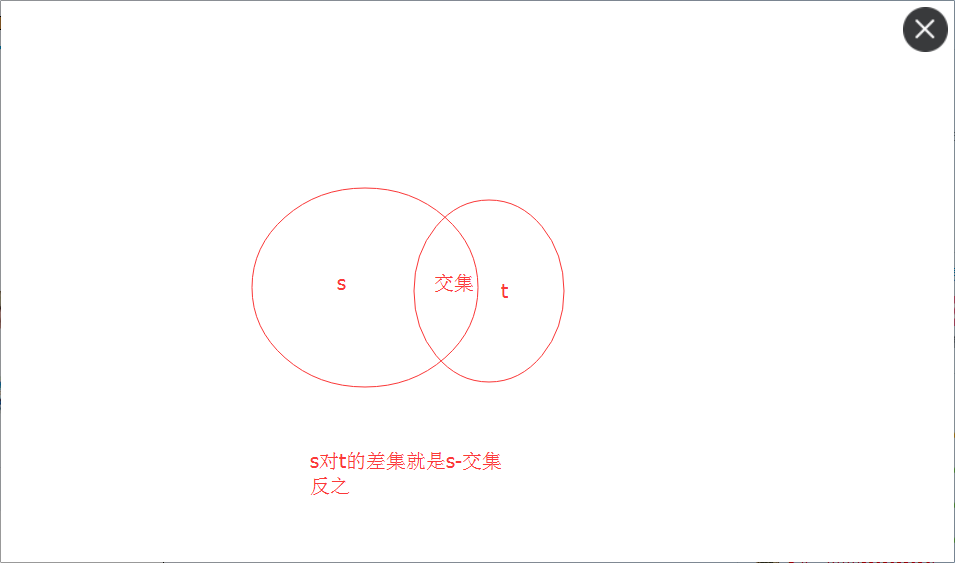字典
特点
- 字典是无序的
- 字典的key是唯一的
字典的格式
info = { 'stu1101' : "TengLan Wu", 'stu1102' : "LongZe LuoLa", 'stu1103' : "XiaoZe Maliya", }
当然也可以多层嵌套:
av_catalog = { "欧美":{ "www.youporn.com": ["很多免费的,世界最大的","质量一般"], "www.pornhub.com": ["很多免费的,也很大","质量比yourporn高点"], "letmedothistoyou.com": ["多是自拍,高质量图片很多","资源不多,更新慢"], "x-art.com":["质量很高,真的很高","全部收费,屌比请绕过"] }, "日韩":{ "tokyo-hot":["质量怎样不清楚,个人已经不喜欢日韩范了","听说是收费的"] }, "大陆":{ "1024":["全部免费,真好,好人一生平安","服务器在国外,慢"] } } av_catalog["大陆"]["1024"][1] += ",可以用爬虫爬下来" print(av_catalog["大陆"]["1024"]) #ouput ['全部免费,真好,好人一生平安', '服务器在国外,慢,可以用爬虫爬下来']
字典之增加
>>> info["stu1104"] = "苍井空" >>> info {'stu1102': 'LongZe Luola', 'stu1104': '苍井空', 'stu1103': 'XiaoZe Maliya', 'stu1101': 'TengLan Wu'}
字典之修改
前提是在原有的key值上修改:
>>> info['stu1101'] = "武藤兰" >>> info {'stu1102': 'LongZe Luola', 'stu1103': 'XiaoZe Maliya', 'stu1101': '武藤兰'}
字典之删除
pop
#删除的同时将值取回 >>> info {'stu1102': 'LongZe Luola', 'stu1103': 'XiaoZe Maliya', 'stu1101': '武藤兰'} >>> ret=info.pop("stu1101") #标准删除姿势 ret='武藤兰'
del
#根据key值直接删除 >>> info {'stu1102': 'LongZe Luola', 'stu1103': 'XiaoZe Maliya'} >>> del info['stu1103'] #换个姿势删除
popitem
>>> info {'stu1102': 'LongZe Luola', 'stu1103': 'XiaoZe Maliya'} #随机删除 >>>ret= info.popitem() print(ret) ###('stu1102', 'LongZe Luola')
字典之查找
>>> info = {'stu1102': 'LongZe Luola', 'stu1103': 'XiaoZe Maliya'}
>>>
>>> "stu1102" in info #标准用法
True
>>> info.get("stu1102",'') #获取,如果没有默认为''
'LongZe Luola'
>>> info["stu1102"] #同上,但是看下面
'LongZe Luola'
>>> info["stu1105"] #如果一个key不存在,就报错,get不会,不存在只返回None
Traceback (most recent call last):
File "<stdin>", line 1, in <module>
KeyError: 'stu1105'
其他操作
keys() 获取字典所有key值
#keys >>>dict_keys= info.keys() dict_keys--->(['stu1102', 'stu1103']) for key in dict_keys: print(key)
values()获取字典所有的值
#values >>> info.values() dict_values(['LongZe Luola', 'XiaoZe Maliya'])
items() 将key和values放在元组中
#items info.items() dict_items([('stu1102', '龙泽萝拉'), (1, 2), (3, 4), ('stu1103', 'XiaoZe Maliya'), ('stu1106', 'Alex')]) for key,values in info.items(): print(key,values)
update 将两个字典合并
- A字典updateB字典,A.update(B) 如果key重复,那么值以B字典的为准
#update >>> info {'stu1102': 'LongZe Luola', 'stu1103': 'XiaoZe Maliya', 'stu1106': 'Alex'} >>> b = {1:2,3:4, "stu1102":"龙泽萝拉"} >>> info.update(b) >>> info {'stu1102': '龙泽萝拉', 1: 2, 3: 4, 'stu1103': 'XiaoZe Maliya', 'stu1106': 'Alex'}
setdefault 设置值,如果有对应的key值则设置失败
>>> info.setdefault("stu1106","Alex") 'Alex' >>> info {'stu1102': 'LongZe Luola', 'stu1103': 'XiaoZe Maliya', 'stu1106': 'Alex'} >>> info.setdefault("stu1102","龙泽萝拉") 'LongZe Luola' >>> info {'stu1102': 'LongZe Luola', 'stu1103': 'XiaoZe Maliya', 'stu1106': 'Alex'}
集合
集合是一个无序的,不重复的数据组合,它的主要作用如下:
- 去重,把一个列表变成集合,就自动去重了
- 关系测试,测试两组数据之前的交集、差集、并集等关系
创建一个结合
s=set([1,2,3,4,5,6,7])
t=set([5,7,8,9,10])
集合增删改查
基本操作: t.add('x') # 添加一项 s.update([10,37,42]) # 在s中添加多项 使用remove()可以删除一项: t.remove('H')
t.discard(1) #删除元素,不存在该元素不会报错,如果是remove则报错
len(s) set 的长度 x in s 测试 x 是否是 s 的成员 x not in s 测试 x 是否不是 s 的成员
集合的特性
交集
s=set([1,2,3,4,5,6,7]) t=set([5,7,8,9,10]) ret= s&t #ret=s.intersection(t) print(ret) #{5, 7}
并集
s=set([1,2,3,4,5,6,7]) t=set([5,7,8,9,10]) #并集 print(s.union(t)) print(s | t) #{1, 2, 3, 4, 5, 6, 7, 8, 9, 10}
差集
s=set([1,2,3,4,5,6,7]) t=set([5,7,8,9,10]) print(s.difference(t)) #s里面有的t里面没有的元素 print(t.difference(s)) print(s - t) # {1, 2, 3, 4, 6} # {8, 9, 10} # {1, 2, 3, 4, 6}

对称差集
s=set([1,2,3,4,5,6,7]) t=set([5,7,8,9,10]) #对称差集 print(s.symmetric_difference(t)) #两个并集减去交集 print(s ^ t) #{1, 2, 3, 4, 6, 8, 9, 10}
判断父子集
s=set([1,2,3,4,5,6,7]) t=set([1,2,3]) #子集 print(t.issubset(s)) #t是s的子集,返回true print(s.issuperset(t)) #s是t的父集,返回true